Hue, the ancient capital imbued with serenity, captivates visitors not only with its old-world charm and gentle streets but also with its majestic and imposing system of palaces and tombs. The Nguyen Dynasty, the last feudal dynasty of Vietnam, left a profound mark on this land, especially through unique architectural works that reflect the power, culture, and philosophy of life of its emperors.
This article will take you on a journey to explore the magnificent palaces and majestic tombs, the final resting places of the Nguyen Dynasty emperors, to gain a deeper understanding of the nation’s history, culture, and architectural pinnacle.
Nguyen Dynasty Palaces: Imprints of a Glorious Era
The Citadel of Hue, the power center of the Nguyen Dynasty, is a vast architectural complex comprising numerous palaces, temples, and shrines. Among them, the most prominent are:
Thai Hoa Palace
Thai Hoa Palace is the heart of the Forbidden Purple City, where important court sessions of the king took place. The palace’s architecture is imbued with royal style, featuring sophisticated carvings, shimmering royal yellow glazed tiles, and a spacious, solemn atmosphere.
Forbidden Purple City
The Forbidden Purple City was the living and working area of the king and the royal family. This area includes numerous meticulously and delicately built palaces, pavilions, and royal gardens, reflecting the luxury and supreme power of the emperors.
Nguyen Dynasty Tombs: Eternal Resting Places
The tombs of the Nguyen emperors are not only resting places but also unique architectural artworks, reflecting the personality and philosophy of life of each emperor. Each tomb possesses its own beauty, harmonizing with nature, creating a space that is both solemn and poetic.
Gia Long Tomb (Thien Tho Tomb)
Gia Long Tomb, the tomb of the dynasty’s founder, is nestled amidst the majestic Thien Tho mountain range. With its large area and traditional architectural style, Gia Long Tomb embodies solemnity, grandeur, and is a masterpiece painting amidst the vast natural landscape.
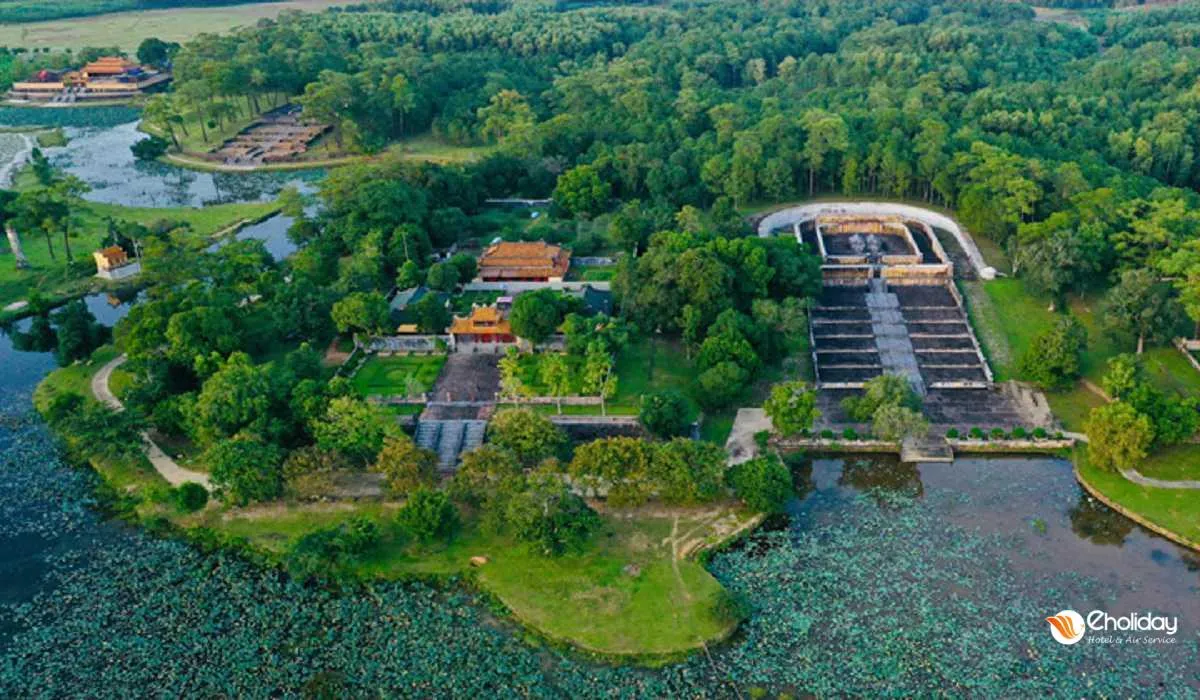
A special feature of Gia Long Tomb is the harmonious combination of architecture and feng shui, with Thien Tho peak located in the center, adjacent to the two graves of King Gia Long and Queen Thua Thien Cao, expressing the king’s attachment and fidelity to his wife.
Minh Mang Tomb (Hieu Tomb)
Minh Mang Tomb, also known as Hieu Tomb, is famous for its symmetrical, solemn architecture and harmony with nature. The tomb is located in the Cam Ke mountain area, with about 40 large and small architectural works arranged harmoniously, creating a large-scale and magnificent architectural complex.
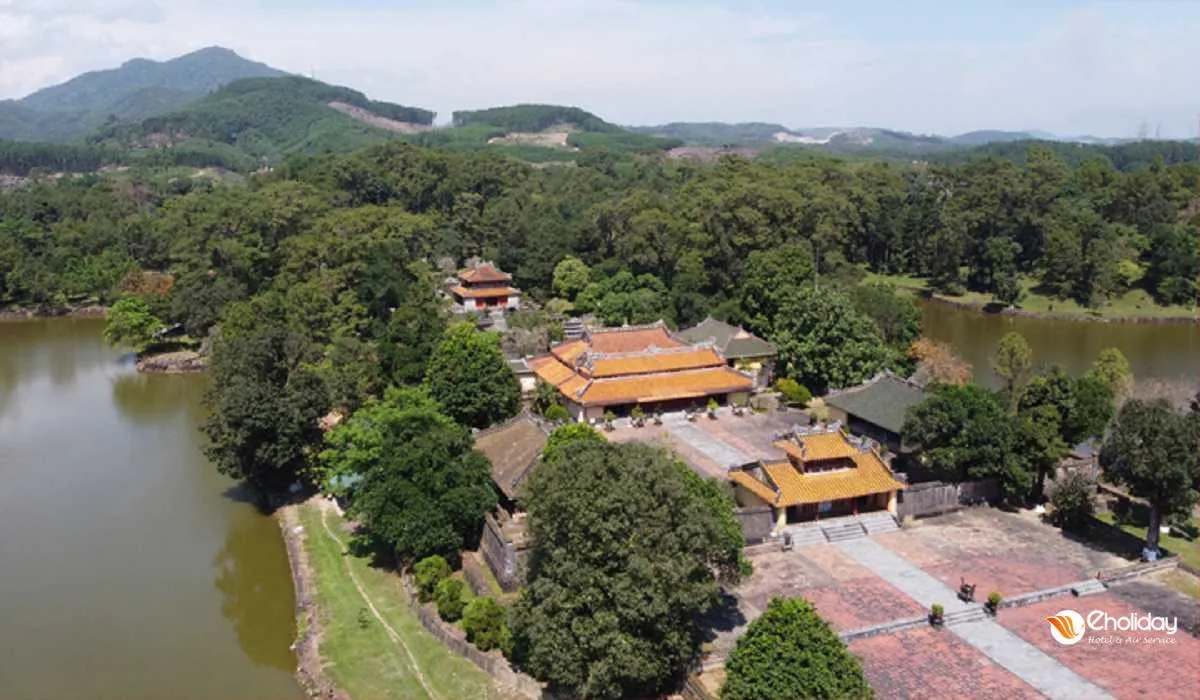
The highlights of Minh Mang Tomb are Dai Hong Mon Gate, Bi Dinh Pavilion, the palace area, Minh Lau tower, and Buu Thanh rampart, all meticulously and exquisitely built, reflecting the majesty and power of the talented king.
Notably, Minh Mang Tomb also has nearly 60 carved Chinese characters containing poems, considered a select poetry museum of Vietnamese poetry from the early 19th century, demonstrating the king’s deep understanding of culture and art.
Thieu Tri Tomb (Xuong Tomb)
Thieu Tri Tomb, also known as Xuong Tomb, possesses a peaceful, simple beauty, different from the solemnity and magnificence of Gia Long and Minh Mang Tombs. The tomb leans against Thuan Dao mountain, with a green countryside landscape surrounding it, creating a peaceful and tranquil space.
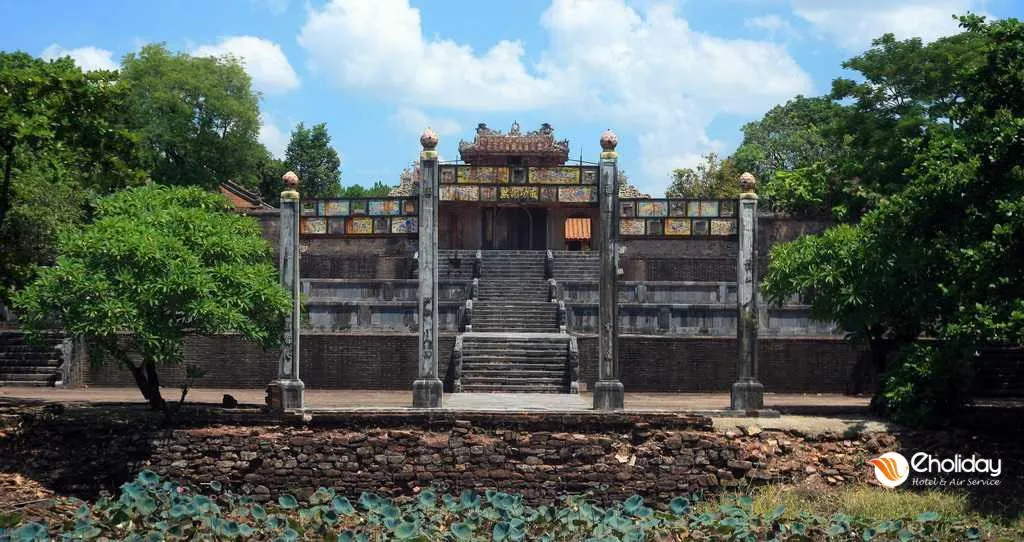
Thieu Tri Tomb was built in a record short time, only 10 months, demonstrating the decisiveness and talent of the builders at that time.
Tu Duc Tomb (Khiem Tomb)
Tu Duc Tomb, also known as Khiem Tomb, is one of the most beautiful and poetic tombs of the Nguyen Dynasty. The tomb is built like a large park, with lakes, pine hills, and harmonious architectural works, creating a space that is both ancient and romantic.
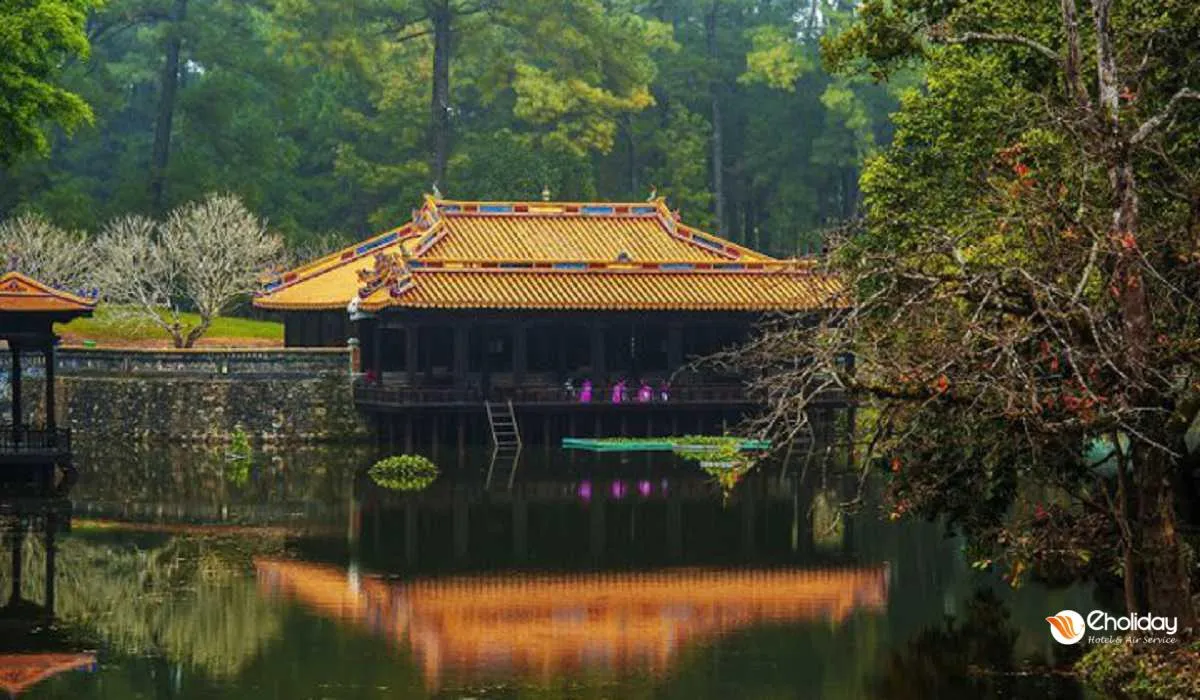
Tu Duc Tomb is not only the king’s resting place but also where he lived and worked for 10 years before his death. Therefore, Tu Duc Tomb bears the strong personal imprint of the king, reflecting his romantic poet’s soul and profound philosophical thoughts.

In particular, Tu Duc Tomb also has Minh Khiem Theater, one of the oldest theaters in Vietnam, where the king often came to enjoy classical drama art.
Duc Duc Tomb (An Tomb)
Duc Duc Tomb, also known as An Tomb, is the resting place of three Nguyen Dynasty emperors: King Duc Duc, King Thanh Thai, and King Duy Tan. Compared to other tombs, Duc Duc Tomb has a simpler and more modest architecture, reflecting the tumultuous life of King Duc Duc.
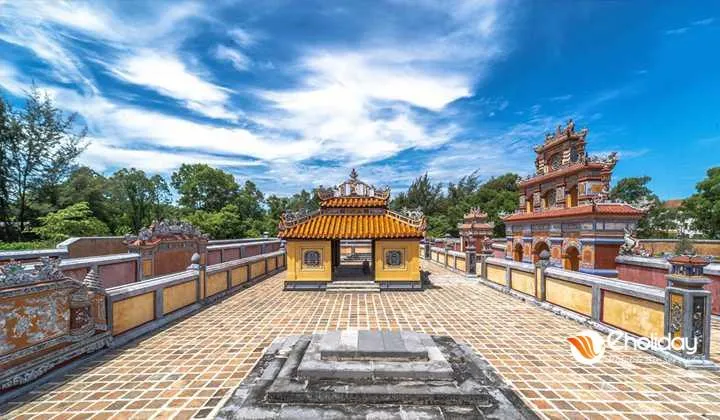
However, Duc Duc Tomb still possesses its own architectural artistic value, showing the respect of King Thanh Thai and King Duy Tan for their father and grandfather.
Dong Khanh Tomb (Tu Tomb)
Dong Khanh Tomb, also known as Tu Tomb, is one of the most unique tombs of the Nguyen Dynasty, with a blend of European-Asian and neo-classical architecture. The tomb was built through four reigns, from King Dong Khanh to King Khai Dinh, so it bears the mark of many different architectural schools.

A special feature of Dong Khanh Tomb is the magnificent palace area with gilded lacquer and paintings depicting the French-Napoleon war, reflecting the East-West cultural exchange during a turbulent historical period.
Khai Dinh Tomb (Ung Tomb)
Khai Dinh Tomb, also known as Ung Tomb, is the last tomb of the Nguyen Dynasty and also the most architecturally unique tomb, combining Western and traditional Vietnamese architecture. The tomb is located on the Chau Chu mountain slope, with the smallest architectural area but requiring the most effort and money to build.
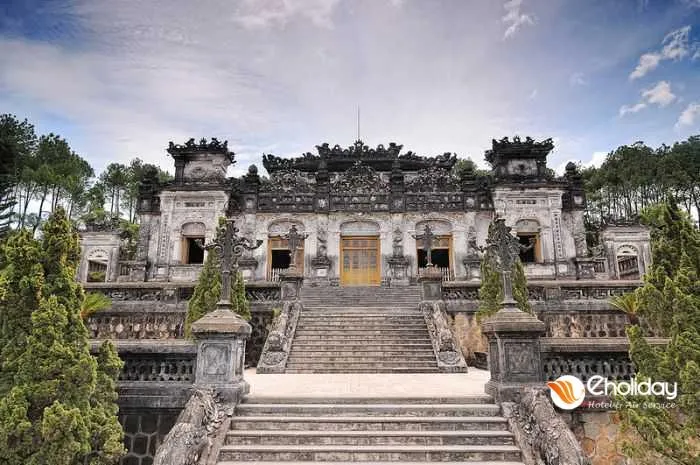
Khai Dinh Tomb is a combination of many architectural styles such as Hindu, Buddhist, Roman, and Gothic, creating a unique and impressive work. In particular, Khai Dinh Tomb also has unique ceramic mosaic paintings, demonstrating the creativity and talent of Vietnamese artisans.
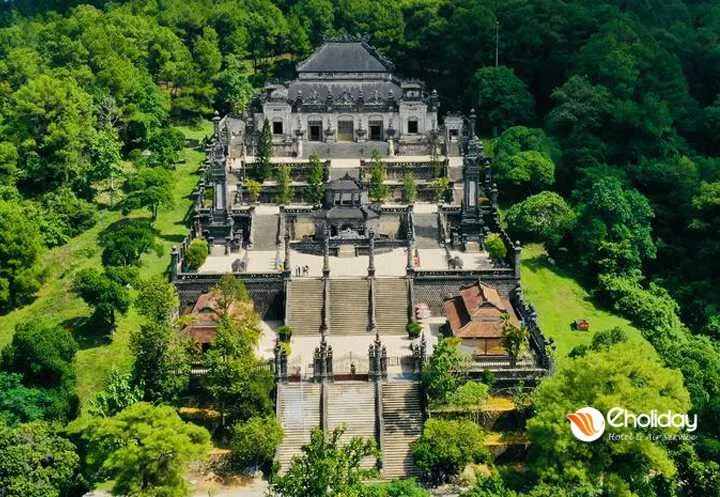
The presence of the king’s statue in the tomb is a difference compared to other Hue tombs, expressing King Khai Dinh’s admiration and respect for himself.
Conclusion
The journey to explore the palaces and tombs of the Nguyen Dynasty in Hue is a journey back in time, to learn about the nation’s history, culture, and architectural pinnacle. Each architectural work is a story, a unique imprint, reflecting the talent, creativity, and dedication of the emperors and talented builders. When visiting Hue, don’t miss the opportunity to admire these architectural masterpieces, to better feel the ancient, serene, and poetic beauty of the Ancient Capital.